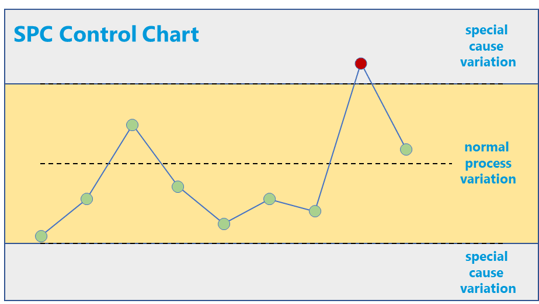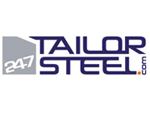Is Statistics Key to Scaling Up High Tech Sector?
High Tech seems to have ended up in 'Perfect Storm'...
In the High Tech industry, extremely high quality requirements apply. In addition, the supply pressures on the High Tech sector remains high. Technological developments are changing at lightning speed, OEMs demand shorter production cycles and an ever smaller chance of errors. We also see an increasing demand for High Tech precision products. This is partly due to geopolitical shifts whereas the US and the European Union are investing billions in 'resourceing' High Tech production to their own continent.
.jpg?width=1400&height=800&name=Shutterstock_2221970489(1).jpg)
A 'perfect storm': more demand volume, in greater variation, shorter delivery times and ever higher quality requirements. Hiring more people is not an immediate solution, because where can you find well-qualified staff? In other words, isn't the High Tech sector in Europe and especially the Netherlands increasingly limited where rapidly scaling up (e.g. building an extra factory and doubling staff) has become virtually impossible?
If scaling up 'old style' is not possible, then we have to do it smarter.
Integral quality assurance, certification of the quality system based on ISO standards: it has all made an important contribution to better quality. Definition of quality and demonstrating that you deliver what is defined. Sounds simple, but it has also led to a considerable administrative burden. We know of cases where half a meter of paper is driven onto the factory floor every day to keep this process under control. There is a lot of measurement and testing done in High Tech companies. Without it, one cannot operate and deliver quality. Or couldn't that be done smarter?
Why statistics is one of the 'smart' solutions.
Most of us hated statistics in school. Nevertheless, I ask you to keep reading, because this mathematical corner can perhaps play an important role in scaling up High Tech production without losing quality. In many production companies - for example automotive production - statistical process control is central to quality assurance, also known as Statistical Process Control (SPC). SPC can be a key to scalability issues for 2 reasons:
1. Reduction tests and measures time by sampling.
2. Direct intervention in the event of special cause variation by the operator.
1. Reduction tests and measures time by sampling.
Process performance is assessed by first looking at the stability of the production process. You use a 'control chart' to compare the process performance with the control limits that belong to the critical customer requirements. The starting point is that with a stable process, testing less is needed and sampling will suffice. Therefore you take samples to determine the 'process capability'. Please note: a process is dynamic, which means that the process capability varies over time with the current performance. In some cases, 100% measurement is required for a while until the process capability is back at a stable level. Operators can then 'scale back' to 'sampling'.

2. Direct intervention in special cause variation by the operator on the basis of associated OCAP
Control Charts help to distinguish between process variation due to ordinary causes versus special cause variation. With such a control chart you can determine whether a process is stable, read: there are only ordinary causes present. Or not: there are also special causes - statically substantiated. An operator should only take action to identify special causes and eliminate them immediately. In all other cases, he must leave the production process untouched. The immediate intervention in case of 'special cause variation' prevents high costs of 'rework' later in the process and reduces costs due to final rejection of the produced part. Timely deployment of the corresponding Out of Control Action Plan (OCAP) and thus immediately remedying the reason for the special cause variation is essential.
Scaling up: delivering more production output with the same amount of qualified personnel
There is substantial operator time savings to be achieved through dynamic 'sampling' combined with direct intervention in the event of a process that has become 'Out of Control'. The direct feedback to the operator prevents significant costs of 'rework' or final disapproval. Everyone can understand that all this is practically impossible if that 'half meter of paper' is distributed on the shop floor every day. The further digitization of the shop floor has therefore become increasingly important. Wanting to scale up in the short term probably means making sure you deliver significantly more production output with the same amount of people. Especially now that finding qualified personnel is becoming increasingly difficult.
Want to read more about how Togetr applies SPC in Digital Factories?












